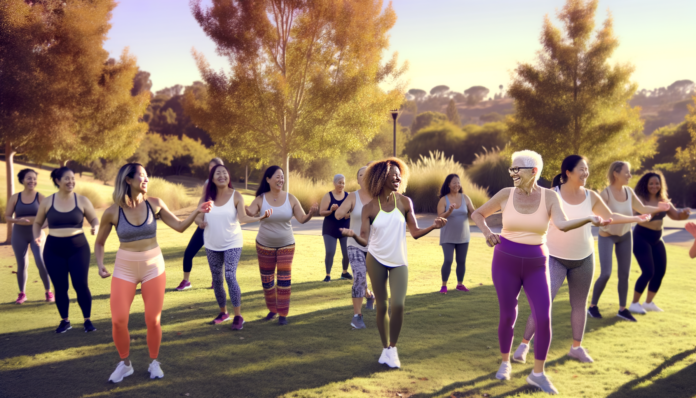Introduction
The Importance of Social Activities for Well-being
Human beings are inherently social creatures. Our connections with others enable us to survive and thrive. Yet, in today’s fast-paced world, we often overlook the importance of social activities for our overall well-being. Engaging in social activities not only enriches our lives with joy and entertainment but also plays a crucial role in maintaining our mental and physical health. From reducing the risk of depression to strengthening our immune system, the benefits of social interaction are manifold and profound.
Understanding the Connection Between Social Interaction and Health
Research has consistently shown that social interaction has a significant impact on health. People who have strong social networks tend to live longer, respond better to stress, and have stronger immune systems. Social activities provide emotional support, increase our sense of belonging, and can even improve cognitive function. They act as a buffer against mental health issues and can contribute to the development of resilience against physical health problems. In essence, our social lives intertwine with our health in ways that are vital to our well-being.
Overview of Social Activities That Can Enhance Well-being
There is a wide array of social activities that can boost our well-being. These can range from group fitness classes that combine the benefits of exercise with social interaction, to book clubs and art workshops that nourish the mind and soul. Outdoor recreational activities not only provide us with fresh air and vitamin D but also offer opportunities for bonding and adventure. Meditation and mindfulness gatherings promote inner peace and community, while sports clubs and dance workshops offer fun ways to stay active and connected. The key is to find activities that resonate with our personal interests and social needs, creating a balanced and fulfilling social life.
Identifying Personal Interests and Social Needs
Assessing Your Social Preferences
Understanding your social preferences is the first step towards choosing activities that will enhance your well-being. Reflect on past experiences to determine what types of interactions energize you and which ones drain you. Consider using a wellness wheel to identify your core social needs. Do you thrive in large groups or intimate gatherings? Are you seeking intellectual stimulation or emotional support? Perhaps you prefer structured activities over casual meetups. Recognizing these preferences will guide you in selecting social activities that align with your personality and contribute to your overall wellness.
Balancing Solitude and Socializing
Finding the right balance between solitude and socializing is crucial for maintaining well-being. While social activities are important, it’s equally necessary to recognize the value of solitude and personal downtime. Listen to your body and mind to understand when you need to recharge alone and when you’re ready to engage with others. This balance is personal and can vary greatly from one individual to another. Some may require regular social interaction to feel fulfilled, while others might find too much socializing to be overwhelming. Pay attention to how you feel after different types of social engagements to find your ideal balance.
Setting Social Goals Aligned with Well-being
Once you’ve assessed your social preferences and found your balance, it’s time to set social goals that promote your well-being. These goals should be specific, measurable, achievable, relevant, and time-bound (SMART). For example, if you’ve identified that being part of a community is important for your social well-being, you might set a goal to join a local club or group that meets regularly. If you’re looking to expand your social circle, consider setting a goal to attend a new social event each month. Ensure that your goals are flexible enough to adapt to your changing needs and remember that the quality of social interactions often outweighs quantity.
Social Activities for Physical Health
Group Fitness and Exercise Classes
Participating in group fitness and exercise classes is a powerful way to combine the benefits of physical activity with social interaction. These classes create a sense of community and accountability, often leading to higher levels of commitment and motivation. Whether it’s a high-intensity interval training (HIIT) class, yoga, or spinning, the shared experience can foster camaraderie and support among participants. Moreover, the presence of an instructor can provide guidance and encouragement, ensuring that individuals of all fitness levels can participate safely and effectively.
Outdoor Recreational Activities
Outdoor recreational activities offer a unique blend of physical exercise and connection with nature, which can have a profound impact on overall well-being. Activities such as hiking, kayaking, or group cycling allow individuals to engage with their environment while also interacting with others. These activities not only improve cardiovascular health and muscle strength but also provide mental health benefits, such as reduced stress and improved mood, thanks to the natural settings in which they often take place.
Dance and Movement Workshops
Dance and movement workshops are excellent social activities that promote physical health through creative expression. Dance styles like salsa, ballroom, or contemporary not only provide a fun cardiovascular workout but also enhance coordination, balance, and flexibility. These workshops can be particularly beneficial for those looking for a less conventional approach to fitness that also allows for artistic exploration and the opportunity to meet new people with similar interests.
Sports Clubs and Leagues
Joining sports clubs and leagues is another effective way to combine physical activity with social interaction. Engaging in team sports such as soccer, basketball, or volleyball can lead to improved physical health through regular, structured activity. Additionally, being part of a team can enhance one’s sense of belonging and provide a network of support. The competitive aspect of sports leagues also adds an element of excitement and can be a strong motivator for consistent participation.
In conclusion, choosing social activities that also serve as physical exercise can greatly contribute to one’s physical health. These activities not only help in maintaining a healthy body but also provide the social stimulation that is essential for mental and emotional well-being. By identifying activities that align with personal interests, individuals can find enjoyable and sustainable ways to stay active and socially connected.
Social Activities for Mental and Emotional Health
Art and Craft Groups
Engaging in art and craft activities is not just a way to create something beautiful; it’s also a therapeutic process that can significantly enhance mental and emotional health. Participating in art and craft groups provides a sense of accomplishment, boosts self-esteem, and serves as a form of expression that can be particularly beneficial for those who find it challenging to articulate their feelings verbally. The act of creating art in a group setting also fosters a sense of community and belonging, as individuals share their creative journey and support one another’s artistic endeavors.
Book Clubs and Reading Circles
Book clubs and reading circles offer a unique combination of intellectual stimulation and social interaction. Discussing literature allows individuals to explore different perspectives, enhancing empathy and understanding. It also provides an opportunity for social bonding over shared interests. The discussions in these groups can be a springboard for deeper conversations about life, fostering meaningful connections and emotional support among members. Moreover, the act of reading itself has been linked to stress reduction, with the narrative immersion providing a form of escapism and relaxation.
Meditation and Mindfulness Gatherings
Meditation and mindfulness gatherings are powerful tools for improving mental and emotional health. These practices help individuals cultivate a sense of inner peace, reduce stress, and improve concentration. Group meditation adds a communal element to the practice, often making the experience more profound as the collective energy can enhance individual focus and intention. Regular participation in such gatherings can lead to long-term improvements in mental health, including decreased anxiety and a more positive outlook on life.
Support and Discussion Groups
For those facing life challenges or mental health issues, support and discussion groups can be a lifeline. These groups provide a safe and non-judgmental space for individuals to share their experiences and feelings. The act of sharing and listening to others with similar struggles can validate personal experiences and reduce feelings of isolation. Support groups often facilitate personal growth and coping strategies, empowering members to handle their emotional challenges more effectively. The solidarity found in these groups can also build resilience and foster a supportive community that extends beyond the meetings.
In conclusion, social activities like art and craft groups, book clubs, meditation gatherings, and support groups play a crucial role in enhancing mental and emotional health. They provide opportunities for self-expression, learning, stress relief, and forming supportive networks. By choosing social activities that resonate with personal interests and emotional needs, individuals can significantly boost their mental well-being and enrich their social lives.
Integrating Social Activities into a Busy Lifestyle
Time Management Strategies for Socializing
For many, finding time for social activities can be a challenge amidst a hectic schedule. However, with strategic time management, it’s possible to carve out moments for connection. Start by assessing your weekly routine and identifying pockets of time that could be repurposed for socializing. Prioritize activities that provide the most fulfillment and consider combining social interactions with other tasks, such as a walking meeting with a colleague or a group workout session. Setting aside specific times for social activities can also help, such as a regular weekly dinner with friends or family.
Choosing Activities with Dual Benefits
When time is scarce, opt for social activities that serve multiple purposes. For instance, joining a book club can nourish your intellectual curiosity while providing a platform for social interaction. Similarly, volunteering not only contributes to the community but also allows you to meet like-minded individuals. Look for activities that align with your personal and professional goals, so that time spent socializing also contributes to your growth and well-being.
Creating a Social Activity Calendar
Maintaining a social activity calendar can be a practical way to ensure you stay connected with others. Digital calendars with reminders can help you manage your commitments and RSVPs. Share your calendar with close friends or family to find common free times effortlessly. Remember to include downtime to recharge, as a well-balanced social life includes moments of solitude as well.
Leveraging Technology for Virtual Socializing
In an era where technology keeps us connected across distances, virtual socializing has become a convenient and flexible way to maintain relationships. Video calls, online gaming, and virtual watch parties are just a few ways to engage with others without the need for travel or significant time investment. Embrace social media platforms and messaging apps to stay in the loop with your social circles and plan impromptu virtual meet-ups when face-to-face interactions aren’t possible.
By implementing these strategies, you can integrate social activities into your busy lifestyle, ensuring that your well-being remains a priority. Remember, social connections are not just leisurely pursuits; they are essential components of a healthy, balanced life.
Overcoming Barriers to Social Engagement
Addressing Social Anxiety and Shyness
For many, the thought of engaging in social activities can be daunting due to social anxiety or shyness. It’s important to recognize that these feelings are common and can be managed with the right strategies. Start small by choosing low-pressure situations where you can practice interacting with others, such as a casual meet-up with a friend. Gradually increase the size and complexity of social settings as your confidence grows. Professional help, such as cognitive-behavioral therapy, can also be effective in addressing social anxiety. Additionally, mindfulness techniques can help you stay present and reduce worry during social interactions.
Finding Like-minded Communities
Connecting with individuals who share your interests can make socializing more enjoyable and less stressful. Look for groups or clubs that align with your hobbies or passions. This could be a local book club, a gardening group, or a sports team. Online platforms can also be a great resource for finding communities, especially if your interests are niche or uncommon. Remember, when you share common ground with others, conversations and connections can flow more naturally.
Dealing with Time and Financial Constraints
One of the most common barriers to social engagement is the lack of time or financial resources. To overcome this, prioritize and schedule social activities just as you would any important appointment. Opt for free or low-cost events in your community, or suggest activities that involve minimal expenses, such as a potluck dinner or a visit to a public park. If time is scarce, combine socializing with other tasks. For instance, you could join a walking group to combine exercise with social time, or attend a networking event that relates to your career development.
In conclusion, while barriers to social engagement can be challenging, they are not insurmountable. By taking proactive steps to address social anxiety, seeking out like-minded individuals, and being creative with your time and finances, you can enjoy the benefits of social activities and enhance your overall well-being.
Conclusion
Recap of Social Activities That Boost Well-being
Throughout this article, we have explored a variety of social activities that play a crucial role in enhancing our well-being. From group fitness classes that not only improve our physical health but also provide a sense of community, to book clubs and reading circles that stimulate our minds and foster deep connections, the benefits of social engagement are manifold. We’ve seen how meditation and mindfulness gatherings can support our mental and emotional health, and how support and discussion groups offer a safe space for sharing and growth. These activities, among others, contribute significantly to our overall sense of happiness and fulfillment.
Encouragement to Explore and Connect
As we navigate the complexities of modern life, it is essential to remember the power of connection. I encourage you to step out of your comfort zone and explore the vast array of social activities available. Whether it’s joining a sports league, participating in outdoor recreational activities, or engaging in art and craft groups, there is something for everyone. The key is to find activities that resonate with your personal interests and social needs, fostering connections that enrich your life and contribute to a robust social network.
Final Thoughts on Maintaining a Balanced Social Life
Maintaining a balanced social life is a dynamic process that requires intention and effort. It’s about finding the right mix of solitude and socializing that suits your individual preferences and lifestyle. By setting realistic social goals, managing your time effectively, and overcoming barriers to social engagement, you can create a fulfilling social life that supports your well-being. Remember, social activities are not just a source of entertainment; they are a vital component of a healthy, balanced life. So, take the initiative to connect and thrive, for it is in our relationships and interactions with others that we often find the greatest joy and meaning in life.








